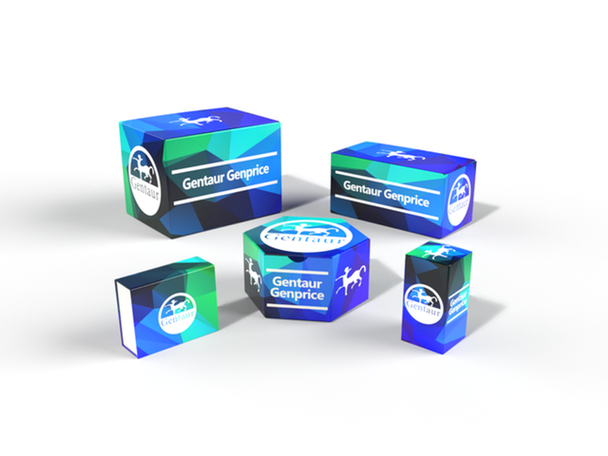Description
KIR3DL2 Antibody | 13-440 | Gentaur UK, US & Europe Distribution
Host: Rabbit
Reactivity: Human, Mouse, Rat
Homology: N/A
Immunogen: Recombinant fusion protein containing a sequence corresponding to amino acids 361-455 of human KIR3DL2 (NP_006728.2) .
Research Area: Immunology, Innate Immunity
Tested Application: WB
Application: WB: 1:500 - 1:2000
Specificiy: N/A
Positive Control 1: HL-60
Positive Control 2: LO2
Positive Control 3: MCF7
Positive Control 4: Mouse spleen
Positive Control 5: Mouse liver
Positive Control 6: Rat spleen
Molecular Weight: Observed: 50kDa
Validation: N/A
Isoform: N/A
Purification: Affinity purification
Clonality: Polyclonal
Clone: N/A
Isotype: IgG
Conjugate: Unconjugated
Physical State: Liquid
Buffer: PBS with 0.02% sodium azide, 50% glycerol, pH7.3.
Concentration: N/A
Storage Condition: Store at -20˚C. Avoid freeze / thaw cycles.
Alternate Name: 3DL2, CD158K, KIR-3DL2, NKAT-4, NKAT4, NKAT4B, p14killer cell immunoglobulin-like receptor 3DL2, CD158 antigen-like family member K, KIR antigen 3DL2, MHC class I NK cell receptor, killer Ig receptor, killer cell immunoglobulin-like receptor, three domains, long cytoplasmic tail, 2, killer-cell immunoglobulin-like receptor, natural killer-associated transcript 4, p70 NK receptor CL-5, p70 killer cell inhibitory receptor, p70 natural killer cell receptor clone CL-5
User Note: Optimal dilutions for each application to be determined by the researcher.
BACKGROUND: Killer cell immunoglobulin-like receptors (KIRs) are transmembrane glycoproteins expressed by natural killer cells and subsets of T cells. The KIR genes are polymorphic and highly homologous and they are found in a cluster on chromosome 19q13.4 within the 1 Mb leukocyte receptor complex (LRC) . The gene content of the KIR gene cluster varies among haplotypes, although several 'framework' genes are found in all haplotypes (KIR3DL3, KIR3DP1, KIR3DL4, KIR3DL2) . The KIR proteins are classified by the number of extracellular immunoglobulin domains (2D or 3D) and by whether they have a long (L) or short (S) cytoplasmic domain. KIR proteins with the long cytoplasmic domain transduce inhibitory signals upon ligand binding via an immune tyrosine-based inhibitory motif (ITIM) , while KIR proteins with the short cytoplasmic domain lack the ITIM motif and instead associate with the TYRO protein tyrosine kinase binding protein to transduce activating signals. The ligands for several KIR proteins are subsets of HLA class I molecules; thus, KIR proteins are thought to play an important role in regulation of the immune response. This gene is one of the 'framework' loci that is present on all haplotypes. Alternatively spliced transcript variants encoding multiple isoforms have been observed for this gene.






